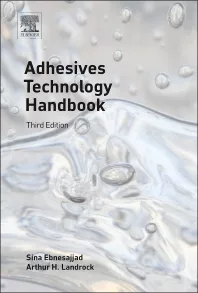Advancing Adhesives: Reusable and Renewable Adhesive Mimics Geckos
Researchers have re-designed Geckskin with renewable materials.
Traditional adhesives, usually petroleum-based and often intended for a single use, present a sticky situation for sustainability. However, researchers at the University of Massachusetts-Amherst have redesigned their Geckskin adhesive using renewable materials. Geckskin is a reusable adhesive that is able to hold hundreds of pounds with just an index-card-sized swatch.
“Green Geckskin” is the latest product trademarked by UMass-Amherst from the polymer science and engineering team of professor Al Crosby and researcher Michael Bartlett, who, with others including biologist professor Duncan Irschick, first introduced the flexible adhesive Geckskin in 2012. It mimics a gecko’s ability to strongly attach its toes yet easily detach from walls and ceilings, over and over. Bartlett and Crosby describe the new development in a recent issue of Advanced Materials.*
The UMass-Amherst polymer scientists are excited about possible new uses for Green Geckskin. For example, Bartlett and Crosby demonstrate that their adhesives made from renewable materials could be used to easily attach and release a solar panel to provide a portable charge for an electronic device at many different locations, from bus stop to office window, over the course of a day.
Crosby and colleagues say the shift toward sustainable adhesives could have a significant impact on the environment while increasing adhesive effectiveness. “The gecko provided the inspiration for Geckskin, so we looked back to nature once again for materials to create renewable, reusable adhesives,” Crosby said.
To create the new, more sustainable adhesive materials, the scientists use natural rubber impregnated into stiff natural fiber fabrics such as cotton, hemp and jute. As with the original invention, this simple yet versatile combination of materials allows the pad to “drape” over a surface to maximize contact while simultaneously being stiff, which enables the adhesive pad to hold a heavy load while maintaining easy release and leaving behind no residue.
“We show that these adhesives can be repositioned and reused over many loading cycles without any loss of performance,” they write. In addition, the adhesives can be composted or repurposed at the end of use.
“This work represents a breakthrough on multiple grounds,” Crosby said. “They are reversible adhesive materials which are renewable, reusable and ultimately biodegradable, providing multiple routes to sustainability.”
“We expect that these reversible adhesive materials will offer utility in a wide variety of uses where environmentally responsible, temporary fastening or hanging is desired for consumer or industrial applications,” the inventors write.
This work was supported by the UMass-Amherst Office of Commercial Ventures and Intellectual Property.
For more information, visit http://geckskin.umass.edu.
*Bartlett, Michael D., and Crosby, Alfred J., "High Capacity, Easy Release Adhesives From Renewable Materials," Advanced Materials, first published online February 6, 2014, http://onlinelibrary.wiley.com/doi/10.1002/adma.201305593/abstract.
Looking for a reprint of this article?
From high-res PDFs to custom plaques, order your copy today!



